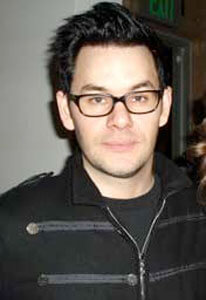Chris Anthony is an artist from Stockholm, Sweden, primarily known for his macabre and Victorian Gothic-inspired photographs. Anthony has also directed commercials for companies such as Deutsche Telekom and music videos for groups such as
The Dandy Warhols. Anthony currently specializes in photography. He often uses vintage lenses produced between 1860 and 1910 to help create an
"otherworldly atmosphere." He uses 5x7 and 8x10 formats in conjunction with digital scanners in order to manipulate the images in Photoshop.
Chris Anthony has won several prestigious awards including: Black Book Raw - 50 Photographers 2008 Go Indie Photo Contest/PDN Stock Photo Guide 2008 - Professional Grand Prize Winner & Category Winner for "I'm the Most Normal Person I Know" The 2007 Grand Prize in the American Photo Images of the Year competition for "Victims and Avengers" First place in the music advertising category in the International Photography Awards 2007's Professional Photographer of the Year Competition. American Photography 23rd Annual 2007, My Chemical Romance "The Black Parade".
Source: Wikipedia
Chris Anthony's world is wonderful collection of object symbols, set design, and character development. His photographs are an intersection of Renaissance set and costume design, melted with a process that employs both antique photographic equipment and technology through post-production. His work is lush and painterly guided by deep hues of color, muted and apart in time. He creates an image that is akin to filmwork in its narrative, both cinematic and containing all the elements of a story left open-ended. His characters linger in a loosely draped studio space, a century gone by, waiting, wandering, lost in thought, casting challenge to unravel the mystery of the objects that accompany.
Chris Anthony’s work has been exhibited in Los Angeles, Stockholm, Brooklyn, Hong Kong, Washington D.C., London, Bath, San Francisco and is included in many private and public collections around the world. Publications that have featured Anthony and his work include the
Los Angeles Times,
Washington Post,
Photo District News,
Eyemazing,
Art News,
American Photo,
Blink,
Paper,
Photo+,
GUP,
Fraction Magazine,
Nylon,
Black Book,
Juxtapoz,
Zoom,
Angeleno,
Huffington Post,
Corriere Della Sera and
LA Weekly. Clients include Chiat/Day, Sony Playstation, Sony Music, Universal Music Group, Republic Records, Warner Music, Los Angeles Magazine, Hollywood Records, Reprise, Stuttgart City Ballet, Myspace Records, Dell and USC.
Born in Sweden, Anthony currently lives and works in Los Angeles, California.
Source: Randall Scott Projects
